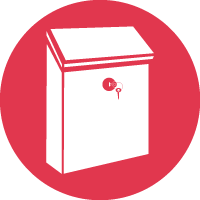-
What can you see and do? You can't Edit
Users Assigned: Shimizu77Here in the Juko-In monastery is where Sen no Rikyu, the founder of the tea ceremony and its most celebrated master, is buried.
His death in 1591 by seppuku (the ritual disemboweling more crudely known to Westerners as harakiri) was in fact commanded by Toyotomi Hideyoshi, his former friend and patron.
Rikyu apparently incurred the warlord's wrath by placing a statue of himself in the large main gate, under which Hideyoshi would have had to pass—an intolerable affront to a famously proud warrior.
SECTION TITLE
| Rev. | User | Date |
|---|
Alternative Routes - Flights, Trains, Buses to Jukoin
Use the all modes of transport search engine to get you there.
Want a widget like this on your own website to help people get to you?
Accommodation near Jukoin
Looking for somewhere to stay near Jukoin? Here is our list of options.
Filter By Distance:
Filter By Tags:
Hotels near Jukoin
Landmarks near Jukoin
Looking for something to do or a place to go see near Jukoin? Here is our list of options.
-
Seimei Shrine1.88 Km from JukoinTrue
-
Ponto-chō4.65 Km from JukoinPonto-chō (先斗町) is a Hanamachi district in Kyoto, Japan, known for geisha and home to many geisha houses and traditional tea houses. Like Gion, Pontochō is famous for the preservation of forms of traditional architecture and entertainment.
-
Nishiki Market4.73 Km from JukoinNishiki Market (錦市場, Nishiki Ichiba) (literally "brocade market") is a marketplace in downtown Kyoto, located on a road one block north and parallel to Shijō Street (四条通, Shijō-dōri) and west of Teramachi Street (寺町通, Teramachi-dōri). Rich with history and tradition, the market is renowned as the place to obtain many of Kyoto's famous foods and goods.
-
Keihan Cable Line18.43 Km from JukoinTrue
-
Iwashimizu Hachimangū18.73 Km from JukoinIwashimizu Hachimangū (石清水八幡宮) is a Shinto shrine in the city of Yawata in Kyoto Prefecture, Japan.
-
Hirakata Park28.24 Km from JukoinTrue
-
Expoland32.73 Km from JukoinExpoland, located in Suita, Osaka, Japan, was opened as the amusement zone at the International Exposition in 1970 (Expo '70) and thrived for over 30 years as an amusement park. There were more than 40 rides and attractions, 19 restaurants and shops. On May 5, 2007, a 19-year-old university student from Higashiomi, Shiga was killed and nineteen other guests were injured when the Fujin Raijin II derailed at Expoland. Initial reports said that forty people were injured, with thirty-one being taken...
-
Momofuku Ando Instant Ramen Museum38.41 Km from JukoinTrue
-
Minakuchi Castle39.05 Km from JukoinMinakuchi Castle (水口城, Minakuchi-jō), also known as Hekisui Castle, is a hirashiro (castle on a plain) located in Kōka, Shiga Prefecture, Japan.
-
Himuro Shrine40.87 Km from JukoinHimuro Shrine (氷室神社, Himuro Jinja) is a Shinto shrine in Nara, Nara Prefecture, Japan. It was established in 710. Kami enshrined here include Emperor Nintoku and Nukata no Onakatsuhiko no Mikoto (額田大仲彦命). The shrine's main festival is held annually on October 1.
Points of Interest near Jukoin
Looking for important things or something to do or a place to go see near Jukoin? Here is our list of options.
Filter By Tags:
-
JukoinHere in the Juko-In monastery is where Sen no Rikyu, the founder of the tea ceremony and its most celebrated master, is buried.
His death in 1591 by seppuku (the ritual disemboweling more crudely known to Westerners as harakiri) was in fact commanded by Toyotomi Hideyoshi, his former friend and patron.
Rikyu apparently incurred the warlord's wrath by placing a statue of himself in the large main gate, under which Hideyoshi would have had to pass—an intolerable affront to a famously proud warrior.Jukoin Japan, 〒603-8231 Kyōto-fu, Kyōto-shi, Kita-ku, Murasakino Daitokujichō, 北区紫野大徳寺町58 -
Kinkaku-jiThis is the famous "Temple of the Golden Pavilion" of Japan.
The original pavilion of the late fourteenth century, completely covered with a gold leaf, was typical of the rampant lavishness of the Muromachi period, indulged in by Shogun Yoshimitsu Ashikaga, who built it for his retirement at the old and mature age of 38 years!
It was burned by a young fanatical monk in 1950, rebuilt in 1955 as an exact copy of the original structure and was reconstructed in 1987 with a new gold foil coating.
Most of its buildings are closed to the public., But you pass by an attractive house with a tea ceremony and a thatched roof, and then you can follow some winding the stone steps to the exit.Kinkaku-ji 1 Kinkakujichō, Kita-ku, Kyōto-shi, Kyōto-fu 603-8361, Japan -
Kitano Tenman-gū Shrine
Temmangu shrines around the Japan are most often statues of cows and bulls in the seated position (and not because it's about to rain!) These statues are thought to have healing properties.
There are also thousands of plum trees and these draw the Japanese crowds just before the annual cherry blossom frenzy. They are coming for the deep pink blooms.
Kitano Temmangu hosts its nationally famous flea market on the 25th of each month, when you'll really see massive hordes of visitors; they come for the items on sale and for rubbing the statues. It is believed that if you rub the same place as a troublesome area on the cow you may get relief from this infirmity or stress.
People travel from afar to sift through the offerings of used kimono, antique furniture and ceramics, antique scrolls, crafts, food, household items, and countless other categories of bric-a-brac and sundries, paying prices ranging from the reasonable to the outrageous.Kitano Tenman-gū Shrine Bakurocho, Kamigyo Ward, Kyoto, Kyoto Prefecture 602-8386, Japan -
Daitokuji Sanshu TempleThis vast complex of 22 sub-temples and affiliated monasteries (down from about 60 during the Edo period) was built, burned down, and rebuilt between the 14th and 17th centuries.
It is richly endowed with artistic treasures and some of Japan's most superb Zen gardens, reflecting its history as a renowned center of calligraphy, gardening, tea ceremony, and other relined arts.
Four of Daitokuji's Zen sub-temples in particular offer superb gardens, teahouses, and artifacts.
Daisen-in, the "Zen Temple without Equal," contains splendid painted fusuma (sliding panels) and wall paintings. Zuiho-in is a monastery whose curious gardens combine Zen Buddhist and Christian symbolism, together with both an attractive rock garden and an unusually geometric tea garden.
Ryugen-in has five distinct rock gardens, one of which is apparently the smallest in Japan.Daitokuji Sanshu Temple Takagamine Senzokucho, Kita, Kyoto, Kyoto Prefecture 603-8469, Japan -
Kyoto Imperial Palace
The present buildings are a 1800s reconstruction; the original 8th-century Imperial Palace was destroyed in one of Kyoto's fires which ravaged the previous buildings.
As you pass through the Seishomon Gate on the western side you will enter the Shishinden ceremonial hall. Here emperors are enthroned this is a privilege retained by the city of Kyoto even after the move to Tokyo, and it is where New Year's audiences are also held.
Kyoto Imperial Palace 3 Kyōtogyoen, Kamigyō-ku, Kyōto-shi, Kyōto-fu 602-0881, Japan -
Ryōan-jiRyoanji is certainly the best known of all Zen Buddhist temples.
Its famous rock garden has sparked more debates - both admirers and critics - than the fragments of gravel in its rectangular length of 30 m by 10 m (98 ft. By 32 ft).
There are no tires or bushes. Only 15 bare rocks adorned with ancient moss, forming clusters in the middle of white gravel which is perfectly raked.
Although generally attributed to the great master Soami, no one knows for sure who created it, or why.
The mystery surrounding its origins does nothing to undermine the power of its simplicity.
Interpretation that confuses, personifies the essence of the essentially anti-intellectual precepts of Zen Buddhism.
Dark islands in the White Sea or mountainous peaks that rise above the clouds: people see what they want to see.
Arrive early in the morning before the crowds arrive.
Kyoto doesn't offer any more memorable experiences than this: The isolated contemplation of Ryoanji's enigmatic rock garden.Ryōan-ji 13 Ryōanji Goryōnoshitachō, Ukyō-ku, Kyōto-shi, Kyōto-fu 616-8001, Japan -
Kyoto PrefectureIf Tokyo is the heart of Japan’s fast-paced, electronic, super-powered rat race, then Kyoto is where it comes down to earth with a culture-heavy, inspiring bump. The former capital (and near namesake of today’s) is cupped by craggy peaks, and hides watery temples, delicate castles and the kind of scenes that bring back the picturesque glories of the movie ‘Memoirs of a Geisha’, and launch them into the present day.
In fact, Kyoto rightly gains comparisons a plenty with classic European cities like Rome and Paris, featuring over 2000 temples and shrines, an astonishing seventeen UNESCO World Heritage sites and all the tranquil, perfectly-ordered temple gardens you could ever hope for. Follow the floaty dresses of the locals around the bamboo-encircled pathways to the tiny poets huts in the hills, and wonder the arching, spacey world of misty, mazed temples and delicate paper walls.
If there’s one complaint about Kyoto, it’s that it’s beauty’s not as explicit as you might expect. Like many things in life, though, this city rewards perseverance. Get past the humid summers and painfully cold winters (worth enduring, perhaps, if only for the picture perfect images of Kyoto in snow) and you’ll find the origin of plenty of Japan’s defining images, from delicate temples to the seemingly countless vending machines.
Ryoan-Ji and Ginkaku-Ji are the key temples, steeped in a Zen-influenced calm that’ll have you drifting around in silence, wondering how the world can possibly be so ordered and so clean, yet still so beautiful. In some of the smaller temples you can don robes and quirky slippers and sample monkdom, while another key taste of the city of culture can be found at Niji Castle, where delicate black on white paintings hang on every wall, and you can almost picture a Shogan stand off taking place over the towering walls. The Gion area of the city still houses the small bars and restaurants and is the place where you can spot a geisha during the day or night.
There’s no better taste of Japanese culture and history to be found then the near-limitless supply of ancient must-sees on offer in Kyoto. To miss it off a Japanese itinerary would be utter insanity. Dig deep, explore hard, and go home with a kimono in your backpack and a tranquil smile on your face.Kyoto Prefecture, Japan -
Kofukuji
Often overlooked by visitors, but worth a visit: Kompukuji is a dry landscape garden with a steep bank of azaleas, this temple is affiliated with the Rinzai school of Zen, but also has literary associations with two of Japan's greatest haiku master: Basho and Buson.
Kofukuji 56 Tanaka Kamiyanagichō, Sakyō-ku, Kyōto-shi, Kyōto-fu 606-8205, Japan -
Nijo Castle Ninomaru palaceNijo Castle is a poignant monument to the ironic twists of history. Built by ieyasu Tokugawa in 1603 for his occasional, reluctant visits to Kyoto (under imperial command), the castle was taken over by the Emperor Meiji after the restoration of 1868. It was here that the emperor signed the edict abolishing the shogunate and sent his carpenters round the castle to replace the Tokugawa hollyhock crest with the imperial chrysanthemum.Nijo Castle Ninomaru palace Japan, 〒604-8301 Kyōto-fu, Kyōto-shi, Nakagyō-ku, Nijōjōchō, 二条通堀川西入二条城町541番地
-
Muromachi WakudenNo info yet.. Please go to this page and enter some.Muromachi Wakuden 679 Marukizaimokuchō, Nakagyō-ku, Kyōto-shi, Kyōto-fu 604-8106, Japan
Exchange Rate History Japan
Exchange rate fluctuations can have a considerable impact on your trip budget. If your home currency has appreciated in value in the recent term over the currency of your destination you are likely to find the place inexpensive.
Select your home currency from the drop down to compare it to the currency in use in Japan.
Currencies fluctuate all the time, to keep updated of rapidly devaluing currencies follow us on Twitter or Facebook , or if you have somewhere special in mind sign up for an account and plan a trip. We will then keep an eye on their currency rates, and send you an alert if their currency goes down in comparison to yours.
Climate near Jukoin
Do you know of anything else about the enviroment that makes you happy to come to Jukoin? If it's a city or neighbourhood are there any climatic, or microclimatic features that you could tell others about. If the location is a building or place, then can you describe it maybe as "sun-lit", or "cold in the mornings". We'd love you to contribute - why not let us know in the drop box below
Graphic showing average weather in Jukoin in Celcius and Centimeters (Change to Farenheit and Inches)
| Month | Temp °C | Rainfall Cm | Temp °F | Rainfall Inches |
|---|---|---|---|---|
| Jan | -0.2 | 177.8 | 31.6 | 70 |
| Feb | 0.1 | 170.7 | 32.2 | 67.2 |
| Mar | 3.1 | 165.3 | 37.6 | 65.1 |
| Apr | 9 | 160.4 | 48.2 | 63.1 |
| May | 13.8 | 145.1 | 56.8 | 57.1 |
| Jun | 18.1 | 217 | 64.6 | 85.4 |
| Jul | 23 | 183.8 | 73.4 | 72.4 |
| Aug | 23.7 | 170.1 | 74.7 | 67 |
| Sep | 19.9 | 248 | 67.8 | 97.6 |
| Oct | 13.6 | 179.6 | 56.5 | 70.7 |
| Nov | 7.9 | 137 | 46.2 | 53.9 |
| Dec | 2.9 | 156.9 | 37.2 | 61.8 |
Travel Info
Latest news from Jukoin
Events near by Jukoin
Do you have an event that you want to shout about? Email contact@redplanet.travel and we'll tell you how to get into this list for free!
Latest News from Jukoin
Let us know what is happening by tweeting @redplanetters - Use this link which will make sure you #hashtag where you are!
Google Reviews Jukoin
Here are some reviews of Jukoin - don't forget to let us know how you got on by using the drop box at the bottom of the page, or joining our community and making a review.
-
I have been visiting several times with special release etc. Barrier paintings have become replicas as well. Still, you can watch the scenic garden and the tea room of the important cultural property. We visited the special exhibition in the year of 2008 twice. At this time the actual barrier paintings were displayed and the admission fee was 2000 yen, but I think that it was worth it. Once I watched all the barrier paintings at the Tokyo National Museum. I wonder if it has become a replica since then, but it was regrettable that the Akuseika was only written down. It would have been better if there was an original Oshu Buddhist written.
-
Fusuma painting, garden etc. It was very wonderful, but barrier painting "waterfall" is just overwhelmed! I wish the admission fee was a bit cheaper (lol)
-
Kano Koshinoka explanation of Susumu's paintings and Hiroshi Senju's waterfall was very nice and the content of the explanation was polite and wonderfully impressed. Although I was empowering the explanation, there are no staff who can answer the question after I finish watching. When I go, please pay attention to me rather than explanation. It is regrettable that it was a curator as saying that. .
-
Well. I happened to enter because it was open to the public, but the admission fee is high. Certainly there is a polite explanation, but at other temples I'm doing this with tape or I'm writing an explanation. Whether it feels cheap or expensive is people.
-
We reserved an admission at 9/20/12: 00 during August. Typhoon 18 approached and heard it in a heavy rain.I was good to see the fuses painting of Eikichi Kano directly.Shumi Hiroshi's Fudo picture is It was contrasting and lovely.
 Reviews
Reviews
We don't have any reviews of Jukoin at this time. If you've been recently please make a submission using the drop box at the bottom of the page, or better yet, join our community, participate and then write some reviews according to your Capacities and Reputation Score.
- We don't have any reviews.. please tell us.
 Page drop box for Jukoin
Page drop box for Jukoin
Been to Jukoin recently, or maybe you know something about the history of this place? We want you to tell the Red Planetter community about this place.
You don't need an account or have to sign up or anything!
You can earn Reputation score by joining our community and also enrol on the TravelTip$ program and get paid for good advice by other travellers.
Please just use the drop box for "facts" only. If you want to give your opinion (qualified by your Capacities) then please write a review (once you have enough Reputation score).
Find E-Mail easier? Send your comments about the place, or advise us if you see something that needs correcting on this page. You can attach pictures to your e-mail too (but try to keep the image size down, and no more than 16mb total).
If you are not logged in, or choose to make the drop box anonymously you can tell the community honestly what you seen without any concern. Please send images or other evidence to support your claims.
Summary
Topic Tags for Jukoin
Topic Tags are what bind the Red Planet Travel site together, and are very important.
This place has been tagged:
If you think those tags are not perfect, then please let the person responsible for this page know by dropping a note in the anonymous drop box below, or better yet sign up or login and join our community, once you've got enough reputation score you can edit them yourself!
Got a Question?
Ask any travel related question or help others with your experience
Page Captain & Crew
Before you apply read about the Roles on Red Planet Travel
Have something to Contribute?
We are looking to grow the information on this site, if you have something to contribute to any page then we'd like to hear from you.
 What's more you can now earn money (paid direct via Paypal) for writing descriptions about places you know.
What's more you can now earn money (paid direct via Paypal) for writing descriptions about places you know.
You will need to tell other members about yourself and your relevant knowledge and experience about what you want to contribute about.
Look below for some example page types, and types of people whose views on a place might be useful to know.
Page Type: Hotel
Tell us your job, knowledge, experience..
My Experience: Doctor
If you are the owner/manager of any place, then you can, of course, take control of your page and add relevant information other visitors might want to know
User Videos
Webmasters & YouTubers - to add a video to this section just link to this page in the YouTube description on your video
User Images
Do you have any recent pictures? Please use the drop box at the bottom of the page to send them to us.










Related Questions
Can you help with answering any of these questions? Help other travellers with your experience and earn reputation score on this site.
Travel Alerts
Important information posted by Red Planetters that might be useful to know.
 MDtravelhealth
MDtravelhealth TravelWiki
TravelWiki Perfect Place
Perfect Place

 More hotels from our Partner
More hotels from our Partner 
